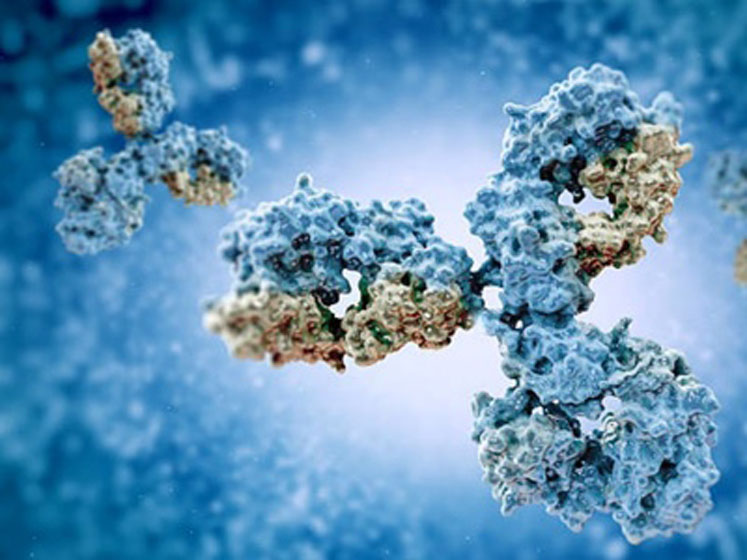Reduced time to market is key to deliver urgently needed therapeutics to patients, as well as to secure commercial success and maximise return on investment.
Commercial launch readiness can be expedited through calculated planning of process/analytical development and characterisation, commercial manufacturing site selection and manufacturing-scale process performance qualification (PPQ).
An effective strategy will reduce the probability of late-stage process, analytical or manufacturing site changes that could put chemistry, manufacturing and control (CMC) activities on the critical path.
Partnering with an experienced contract development and manufacturing organisation (CDMO) can streamline the acceleration of commercial-ready ADC manufacturing. With established platform processes to allow for improved early phase process understanding, and comprehensive knowledge of the scientific, technical, and regulatory requirements to bring a launch-enabling CMC dossier to health authorities, an ideal CDMO will offer unrivalled expertise to support every aspect of the process.
ADCs have improved safety and proven clinical efficacy
ADCs are an important, emerging class of biopharmaceuticals. Harnessing the specificity of an antibody to the mechanism-of-action-specific potency of a small molecule drug to achieve targeted cell death, ADC therapeutics have a predicted market worth of approximately US$10 billion by 2025.1
To date, ADCs have mainly been designed to deliver cytotoxic agents to tumour cells, with five ADC drugs granted approval for oncology indications within the last decade.2,3 Additional non-cytotoxic classes of ADCs are under development that incorporate antibiotics or steroids that target infectious or inflammatory diseases, respectively.4,5
As ADCs offer considerable therapeutic promise for life-changing diseases, speed to market remains essential. However, ADC production is associated with several common challenges:
- supply chain complexity, requiring multiple manufacturing facilities to produce the antibody, drug-linker, ADC and final drug product
- safe handling practices, both to protect the biologic product from contamination as well as to protect manufacturing personnel from the potent small molecule component
- product heterogeneity, requiring analytical tools that are capable of resolving different product variant populations, as well as manufacturing processes with the capacity to control them.
To mitigate risk and assure product safety, efficacy and supply, it is important to partner with a trusted CDMO experienced in these critical aspects, and to maintain and cultivate the strategic partnership throughout the entirety of the ADC lifecycle.
Accelerated approval reduces development timelines
The FDA has introduced four approaches to expedite the availability of therapeutics: Fast Track, Breakthrough Therapy, Accelerated Approval and Priority Review.6 To meet accelerated programme timelines, an experienced CDMO can expedite a drug development programme through all lifecycle stages, including stage 1 (process design), stage 2 (process qualification) and stage 3 (continued process verification).7
By properly leveraging prior knowledge, existing best practices, and platform process/analytical techniques, a strategic partnership can help navigate the accelerated timelines to keep CMC activities and product supply off the critical path. Furthermore, by completing CMC activities earlier, a more robust stability package may be included in the CMC dossier, which could allow for improved shelf-life being approved for the product.
Strategic supplier selection expedites commercial readiness and shortens supply lead times
To prevent unnecessary delays, it is prudent to begin ADC manufacturing at the commercial site as early as possible. This enables a multi-stage process characterisation programme to start earlier in the development cycle, avoiding the need for tech transfer at a late phase and eliminating the requirement to perform laborious and time-consuming comparability studies prior to regulatory submission.
Furthermore, the likelihood for CMC success can be increased by partnering with a CDMO experienced in analytical techniques, process characterisation, process validation, comparability and regulatory submissions.

ADC product supply lead times can also be reduced by selecting a CDMO able to manufacture multiple components of the ADC. A partner with the capability to perform multiple manufacturing steps affords reduced lead times by enabling further processing based on a subset of analytical release testing, elimination of shipping raw materials and/or intermediates, and flexible scheduling to accommodate raw material readiness and operating under one quality system.
When selecting an integrated CDMO it is critical that they have strong programme management to ensure all components of the development programme are working in harmony.
Planning process characterisation strategy and timing relative to PPQ is advantageous
Process characterisation is an essential component of the process validation lifecycle, employing multiple activities to develop product and process control strategies. It typically begins following Phase II clinical trials.
However, if process characterisation is brought forward to Phase I, development plans can support a PPQ earlier on. This requires a clear strategy for the design and timing of experiments and analytical method development.
A primary aim of process characterisation is to ensure that process robustness is suitable to deliver a quality target product profile (QTPP) appropriate for commercial launch. To achieve this, a control strategy is created to meet the QTPP by determining critical quality attributes (CQAs), which are known or highly likely to impact safety or efficacy.
Control points are established that ensure the CQAs and thus the QTPP are met, including material inputs, critical process parameters (CPPs), proven acceptable ranges (PARs), in-process controls (IPCs) and release/stability testing.
To compress programme timelines further, process characterisation activities may be tiered to have some overlap with PPQ runs. PPQ is a component of process validation that is typically performed following process characterisation; yet, a tiered approach to product characterisation enables PPQ to be done much earlier.As an example, process characterisation activities may be categorised as two tiers. Early tier range-finding studies can be used to define PARs and to identify parameters that should be monitored during validation (likely CPPs), enabling PPQ runs to go ahead. Later tier studies may then be performed in parallel with, or following, PPQ.
It is important to note this strategy may result in the need for additional studies should unexpected findings occur during or post-PPQ; therefore, it is best applied to a situation in which a robust platform process is already in place and extensive manufacturing experience is available to reduce the risk.
Utilising prior knowledge to determine CQAs, CPPs and non-critical process parameters (NCPPs), a tiered approach to process characterisation can be highly successful.

Acceleration relies on strong analytical understanding
The use of representative laboratory scale-down models (SDMs) to deliver strong analytical understanding is pivotal to establish QTPP. These may include appropriate scale-down models for conjugation and purification, and small-volume liquid handling robots for chromatography.
Allowing multiple experiments to be performed in parallel, these systems are used to define those parameters that significantly impact CQAs and to eliminate those that have little effect. Studies that are done include range-finding, process mapping, impurity spiking/clearance studies, resin/membrane cleaning/storage studies, resin/membrane ageing studies, virus clearance validation studies and leachable/extractable analyses.
In addition to being vital to process characterisation, analytical methods are employed within other stages of process validation, including structural elucidation, extended characterisation for comparability and QC release. A thorough understanding of a molecule’s structure-function relationship may guide the development process and potentially reduce the total number of studies.
With such a depth of analytical understanding required for approval, accelerated commercial development schemes are best-suited to organisations experienced in analytical method development and application. Upfront investment in such a multitude of analytical methods can often be prohibitive for less experienced organisations.
For those organisations with the capacity to leverage platform methods and prior knowledge, it is often less likely that they encounter the need to implement analytical method changes later in development, an activity that can be hugely detrimental to timelines.
Robust comparability strategy is key to support the validation lifecycle
A caveat of accelerated approval is that there is often little time to fully optimise the process prior to launch (for cycle times or yields); and as well, with limited batch history, a strong stage 3 continued process verification plan is key to ensure the control strategy developed during stage 1 and proven in stage 2 remains in a state of control.
Robust comparability studies are essential to support changes that occur both pre- and post-approval. These can be streamlined by partnering with a CDMO experienced in defining comparability strategies and delivering comparability data.
A strong comparability package empowers organisations to implement new technologies to enhance process robustness, improve product yield, or reduce cycle time.
References
- https://www.prnewswire.com/news-releases/antibody-drug-conjugate-market-size-worth-usd-9-93-billion-by-2025-grand-view-research-inc--851899007.html.
- W.D. Hedrich, et al., "Antibody-Drug Conjugates: Pharmacokinetic/Pharmacodynamic Modeling, Preclinical Characterization, Clinical Studies, and Lessons Learned," Clin. Pharmacokinet. 57(6), 687–703 (2018).
- https://www.fda.gov/NewsEvents/Newsroom/PressAnnouncements/ucm620448.htm.
- R. Liu, et al., "Antibody-Drug Conjugates for Non-Oncological Indications," Expert Opin. Biol. Ther. 16(5), 591–593 (2016).
- M. Yasunaga, et al., "Immunoregulation by IL-7R-Targeting Antibody-Drug Conjugates: Overcoming Steroid-Resistance in Cancer and Autoimmune Disease," Nature Scientific Reports 7, 10735 (2017).
- https://www.fda.gov/forpatients/approvals/fast/default.htm.
- https://www.fda.gov/downloads/drugs/guidances/ucm070336.htm.




